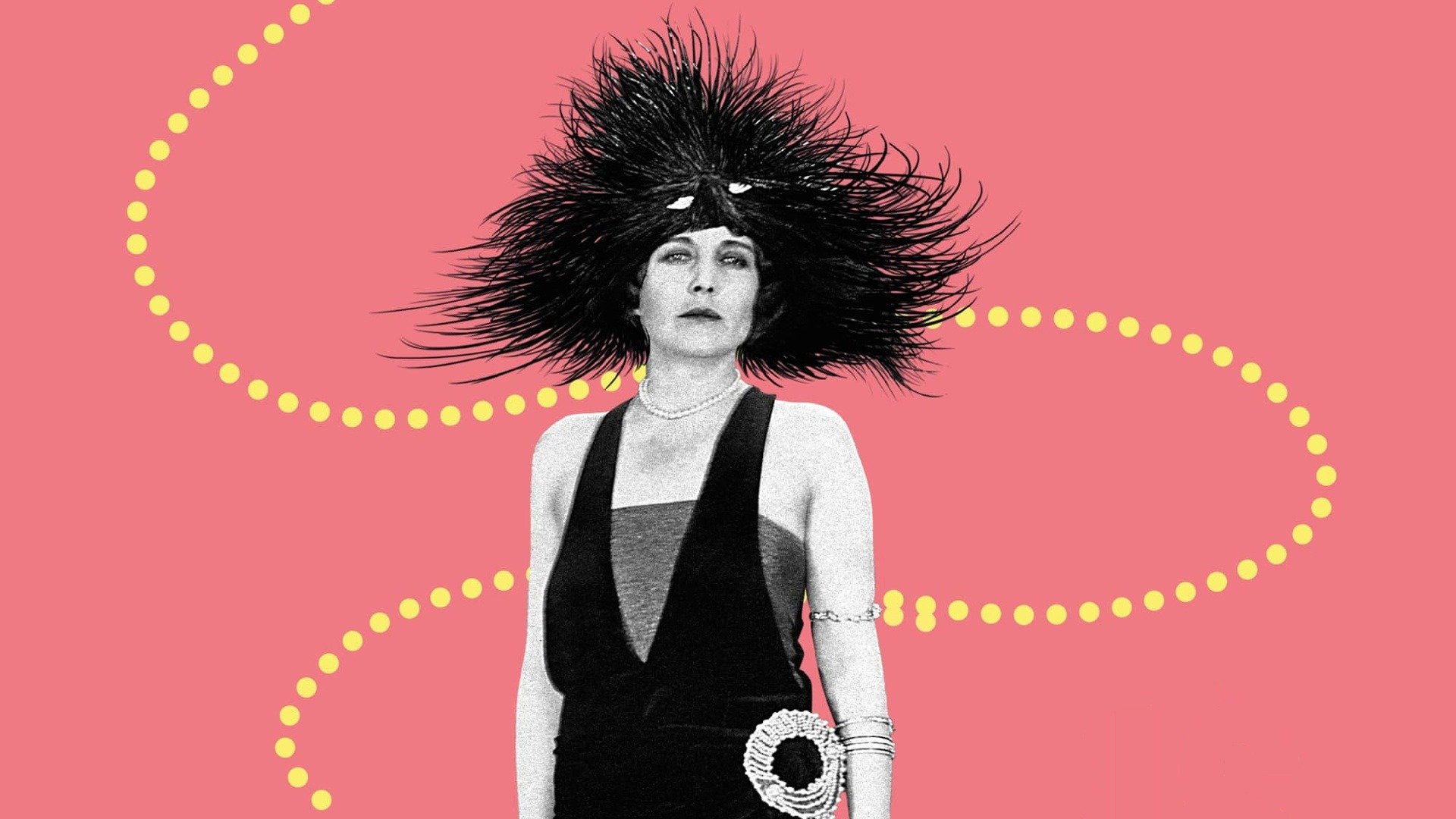
A Woman of Paris: A Drama of Fate is a captivating movie that offers a glimpse into the complex and compelling world of love and fate. Directed by the legendary Charlie Chaplin, this silent film was released in 1923 and has since become a landmark in cinematic history. Set in Paris, the movie follows the story of Marie St. Clair, a young woman torn between her love for Pierre Revel, a struggling artist, and her aspirations for a glamorous life. As the film delves into themes of longing, betrayal, and the power of choice, it takes viewers on a journey that is both emotionally gripping and visually stunning. In this article, we will uncover 37 fascinating facts about this remarkable movie, shedding light on its production, reception, and enduring legacy in the world of cinema.
Key Takeaways:
- A Woman of Paris: A Drama of Fate is a silent film directed by Charlie Chaplin, showcasing love, societal pressures, and the consequences of choices in 1920s Paris.
- Despite initial mixed reviews and commercial failure, the movie was later recognized as an underrated gem, solidifying Chaplin’s reputation as a serious filmmaker and inspiring future storytellers.
A Woman of Paris: A Drama of Fate was released in 1923.
Directed by Charlie Chaplin, it is a silent drama film that explores the complexities of love and fate.
The movie stars Edna Purviance and Adolphe Menjou in the lead roles.
Edna Purviance plays the role of Marie St. Clair, a young woman who moves to Paris in search of a better life.
A Woman of Paris was a departure from Charlie Chaplin’s usual comedic style.
Chaplin wanted to prove his versatility as a director, and this film showcased his ability to handle serious themes.
The movie received mixed reviews upon its release.
While some critics praised the film for its storytelling and performances, others felt that it lacked the charm of Chaplin’s earlier works.
A Woman of Paris was a commercial failure.
Despite the star power of Chaplin and the buzz around the film, it failed to attract a large audience, resulting in financial losses for the production company.
The film was rediscovered and reappraised in later years.
Over time, A Woman of Paris gained recognition as an important work in Chaplin’s filmography and is now regarded as one of his most underrated films.
The movie’s plot revolves around the love affair between Marie and Pierre Revel.
Pierre is played by Adolphe Menjou, and their relationship faces numerous challenges and obstacles throughout the story.
A Woman of Paris explores themes of class, societal expectations, and the consequences of one’s choices.
The film delves into the contrast between the opulent lifestyle of the upper class and the struggles faced by those from lower socioeconomic backgrounds.
The movie showcases stunning cinematography.
Chaplin worked closely with cinematographer Roland Totheroh to create visually striking scenes that convey the emotions and atmosphere of each moment.
The film’s score was composed by Chaplin himself.
Known for his musical talents, Chaplin composed a beautiful and poignant score that adds depth and emotion to the storytelling.
A Woman of Paris is a silent film.
It relies on visual storytelling and expressions to convey the narrative, showcasing Chaplin’s mastery of the silent medium.
The movie showcases the glamorous and decadent lifestyle of 1920s Paris.
From lavish parties to exquisite costumes, the film transports viewers to the vibrant world of the city at that time.
A Woman of Paris was Chaplin’s first film that did not feature his iconic character, the Tramp.
This departure from his usual comedic persona allowed Chaplin to explore new depths as a director and showcase his versatility as an artist.
The movie depicts the harsh realities of life and the consequences of making choices based on societal expectations.
Marie’s journey serves as a cautionary tale about the importance of staying true to oneself and following one’s own dreams and desires.
A Woman of Paris was a critical turning point in Chaplin’s career.
While it may not have been a commercial success at the time, the film solidified Chaplin’s reputation as a serious filmmaker and opened doors for him to explore more dramatic storytelling in the future.
The movie’s screenplay was written by Charlie Chaplin.
Chaplin displayed his storytelling prowess by writing a script that balances romance, drama, and social commentary.
A Woman of Paris was a technically innovative film for its time.
Chaplin experimented with new camera techniques and editing styles to enhance the storytelling and capture the essence of each scene.
The film’s title, A Woman of Paris, encapsulates the central focus of the story.
It emphasizes Marie’s journey, her struggles, and her determination to find her place in the city of love and dreams.
The movie’s running time is approximately 78 minutes.
Within this relatively short duration, Chaplin manages to weave a compelling and emotionally charged narrative.
A Woman of Paris features captivating performances from the cast.
Edna Purviance delivers a nuanced and heartfelt portrayal of Marie, effectively conveying the character’s vulnerability and strength.
The film’s production design captures the essence of the time period.
From the detailed sets to the authentic costumes, every aspect of the film’s design contributes to its immersive experience.
A Woman of Paris was one of the first films to delve into the complexities of romantic relationships.
It explores the different facets of love, including passion, sacrifice, and betrayal, through the lens of Marie and Pierre’s tumultuous affair.
The movie evokes a range of emotions in its viewers.
From moments of joy and laughter to scenes of heartbreak and despair, A Woman of Paris takes its audience on an emotional rollercoaster.
Chaplin’s direction in A Woman of Paris showcases his keen eye for detail and his ability to extract powerful performances from his actors.
His mastery of the medium is evident in every frame, making the film a visual and storytelling feast.
The movie’s theme of societal pressure and expectations resonates with audiences even today.
It prompts viewers to reflect on the influence of societal norms on personal choices and the importance of following one’s own path.
A Woman of Paris is a timeless film that continues to be appreciated by cinephiles and Chaplin enthusiasts.
Its exploration of universal themes and its exceptional craftsmanship make it a significant contribution to the world of cinema.
The movie’s soundtrack enhances the viewing experience by immersing the audience in the emotional landscape of the story.
From subtle piano melodies to sweeping orchestral arrangements, the music complements the visuals and enhances the overall impact of the film.
A Woman of Paris serves as a testament to Chaplin’s versatility as a storyteller.
While best known for his comedic prowess, this film demonstrates his ability to tackle serious subject matter with finesse and emotional depth.
The movie’s narrative unfolds in a non-linear fashion, keeping the audience engaged and intrigued throughout.
Chaplin plays with the chronology of events, adding layers of complexity to the story and allowing for unexpected twists and turns.
A Woman of Paris features beautifully choreographed dance sequences that add an element of elegance and grace to the film.
The dances serve as a means of storytelling and further highlight the characters’ emotions and relationships.
The film’s title, A Woman of Paris: A Drama of Fate, captures the essence of the movie’s central themes.
It emphasizes the role of fate and the imporance of choices in shaping one’s destiny.
A Woman of Paris offers a glimpse into the Roaring Twenties and the social dynamics of the time.
From the extravagant parties to the hidden struggles, the film paints a vivid portrait of an era on the cusp of change.
The movie’s climactic moments are filled with tension and emotion, leaving a lasting impact on the audience.
Chaplin masterfully builds suspense and creates cathartic moments that resonate long after the credits roll.
A Woman of Paris showcases the power of silent cinema to convey deep emotions without the need for dialogue.
The absence of spoken words allows the visuals and performances to speak volumes, creating a truly immersive experience.
The film’s critical reassessment in later years has led to its preservation and restoration for future generations to enjoy.
Thanks to the efforts of film enthusiasts and restoration experts, A Woman of Paris continues to be accessible and appreciated by audiences worldwide.
A Woman of Paris paved the way for other filmmakers to explore the complexities of human relationships and societal norms.
Its impact on the cinematic landscape cannot be understated, as it challenged conventions and expanded the possibilities of storytelling on the silver screen.
The legacy of A Woman of Paris endures, reminding us of Charlie Chaplin’s prowess as a director and his commitment to pushing the boundaries of filmmaking.
It stands as a testament to his artistic vision and continues to inspire filmmakers and cinephiles alike.
Conclusion
In conclusion, A Woman of Paris: A Drama of Fate is a remarkable film in the career of legendary director Charlie Chaplin. It may not have achieved the commercial success of his other films, but it is a powerful and poignant exploration of love, loss, and the complexity of human relationships. With stunning performances from the cast, breathtaking cinematography, and a thought-provoking storyline, this film offers a unique and compelling viewing experience. Despite the initial negative reception, A Woman of Paris has gained recognition over the years for its artistic merit and contribution to the silent film era. It is truly a must-watch for any fan of Chaplin’s work and a testament to the director’s versatility and creativity.
FAQs
1. Who directed the movie A Woman of Paris: A Drama of Fate?
Charlie Chaplin directed the movie A Woman of Paris: A Drama of Fate.
2. When was A Woman of Paris: A Drama of Fate released?
The movie was released on September 26, 1923.
3. What is the genre of A Woman of Paris: A Drama of Fate?
A Woman of Paris: A Drama of Fate is a drama film.
4. Who stars in the movie A Woman of Paris: A Drama of Fate?
The film stars Edna Purviance, Adolphe Menjou, and Clarence Geldart, among others.
5. What is the plot of A Woman of Paris: A Drama of Fate?
The movie follows the story of Marie St. Clair, a young woman who leaves her small town to pursue a life in Paris. She falls in love with an artist, Pierre Revel, but circumstances and societal pressure force them apart. The film delves into the complexities of their relationship and the consequences of their choices.
6. Was A Woman of Paris: A Drama of Fate a commercial success?
No, the movie did not perform well at the box office upon its initial release.
7. Has A Woman of Paris: A Drama of Fate received recognition?
While the movie faced initial negative reception, it has gained recognition over the years for its artistic merit and contribution to the silent film era.
8. Is A Woman of Paris: A Drama of Fate available to watch today?
Yes, the movie is available for viewing today through various platforms and is often considered a significant work in Charlie Chaplin’s filmography.
Was this page helpful?
Our commitment to delivering trustworthy and engaging content is at the heart of what we do. Each fact on our site is contributed by real users like you, bringing a wealth of diverse insights and information. To ensure the highest standards of accuracy and reliability, our dedicated editors meticulously review each submission. This process guarantees that the facts we share are not only fascinating but also credible. Trust in our commitment to quality and authenticity as you explore and learn with us.


